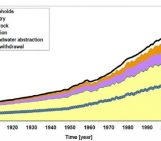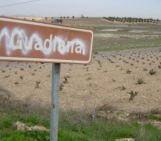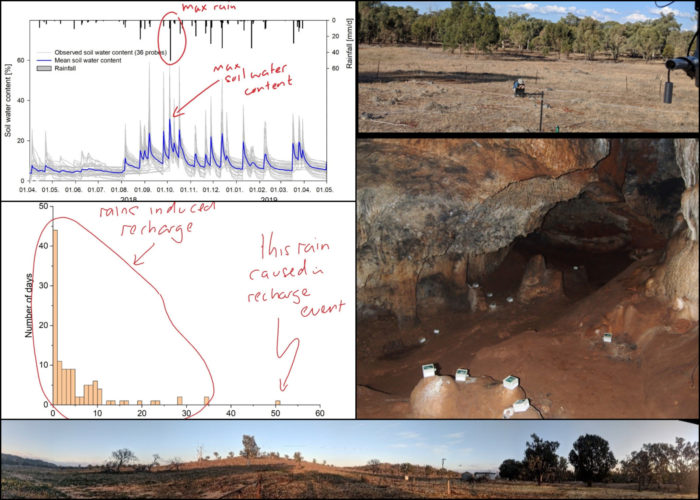
Post by Andy Baker, professor in the Connected Waters Initiative Centre at UNSW Sydney, Andreas Hartmann, assistant professor in Hydrological Modeling and Water Resources at the University of Freiburg, and Romane Berthelin, PhD student in Hydrological Modeling and Water Resources at the University of Freiburg.
Here in New South Wales (NSW) in southeastern Australia, a long-running drought continues. The government’s water minister Melinda Pavey noted recently that “This drought is more severe than NSW has ever experienced” and some of the worst in living memory. Almost all the state of NSW is suffering from drought, according the NSW Dept of Primary Industries, with some regions predicted to run out of water by November.
Almost a year ago, one of us (AB) wrote about the relationship between groundwater and drought, concluding that a groundwater drought had commenced across much of New South Wales. We noted that flooding rains were needed to generate some river recharge, to replenish our groundwater resource. It hasn’t happened. But, in many places, the landscape is green, and the term ‘green drought’ is now being used. What is it?

Wellington, NSW. August 2019. This is the UNSW Research Station, normally stocked and cropped, but not in 2018 or 2019.
Before answering that, we will quickly explain some groundwater terminology. Firstly, recharge is the process by which water reaches, or ‘tops up’, an aquifer. The two main types of recharge are ‘river recharge’, where water leaks from the base of a river, lake or reservoir and into the groundwater system. The other is ‘rainfall recharge’ which occurs when the water holding capacity of a soil is exceeded, allowing the downward flux of water. Quantifying the relative contributions of river recharge and rainfall recharge is not easy. For example, groundwater levels measured in bores or wells would be determined by one or both of these processes, plus of course any other non-climate factors such as groundwater abstraction.
So how does this relate to a ‘green drought’? Well, the term is being used because in some regions there has been enough rainfall for some shallow rooted vegetation to grow. In farming regions, a ‘green drought’ can specifically refer to the fact that fields look green, but the colour comes from weeds and other undesirable plants. When you see extensive green weeds across the landscape they reflect that there is another environmental problem – a paucity of recharge heading towards the aquifer. This rainfall can penetrate the soil profile, but only to a limited extent before the water is taken up by plants or evaporates back into the atmosphere (both process together are called evapotranspiration). In a ‘green drought’, none of this water penetrates deeper parts of the soil profile; there is not enough rain to saturate the soil and generate either a downward flux of water from the soil profile (often called deep drainage) or surface runoff to rivers. The groundwater recharge drought continues.
Here in the Central West NSW we have some excellent data to show exactly what is going on. At a karstified limestone site we have been simultaneously measuring rainfall, soil water storage and recharge events expressed by cave drip waters since April 2018. All part of an international network to characterize karstic recharge and evapotranspiration.
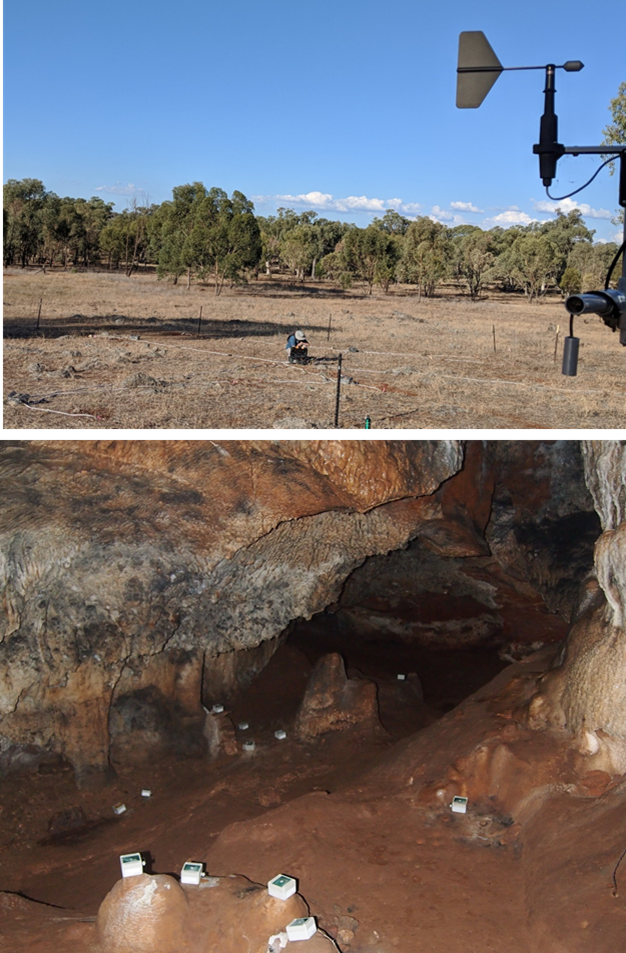
On the surface, Andreas Hartmann downloads data from the network of soil moisture probes at Wellington, New South Wales. 25 meters underground, loggers record when water reaches the cave.
Since April 2018 we have had only one recharge event recorded in the cave. This occurred in October 2018 and was after 50 mm of rainfall on one day (5 October 2018). No other rainfall events have generated recharge at the monitoring site since April 2018, despite many rain days with much lower rainfall amounts. The frequency histogram of daily rainfall shows this:
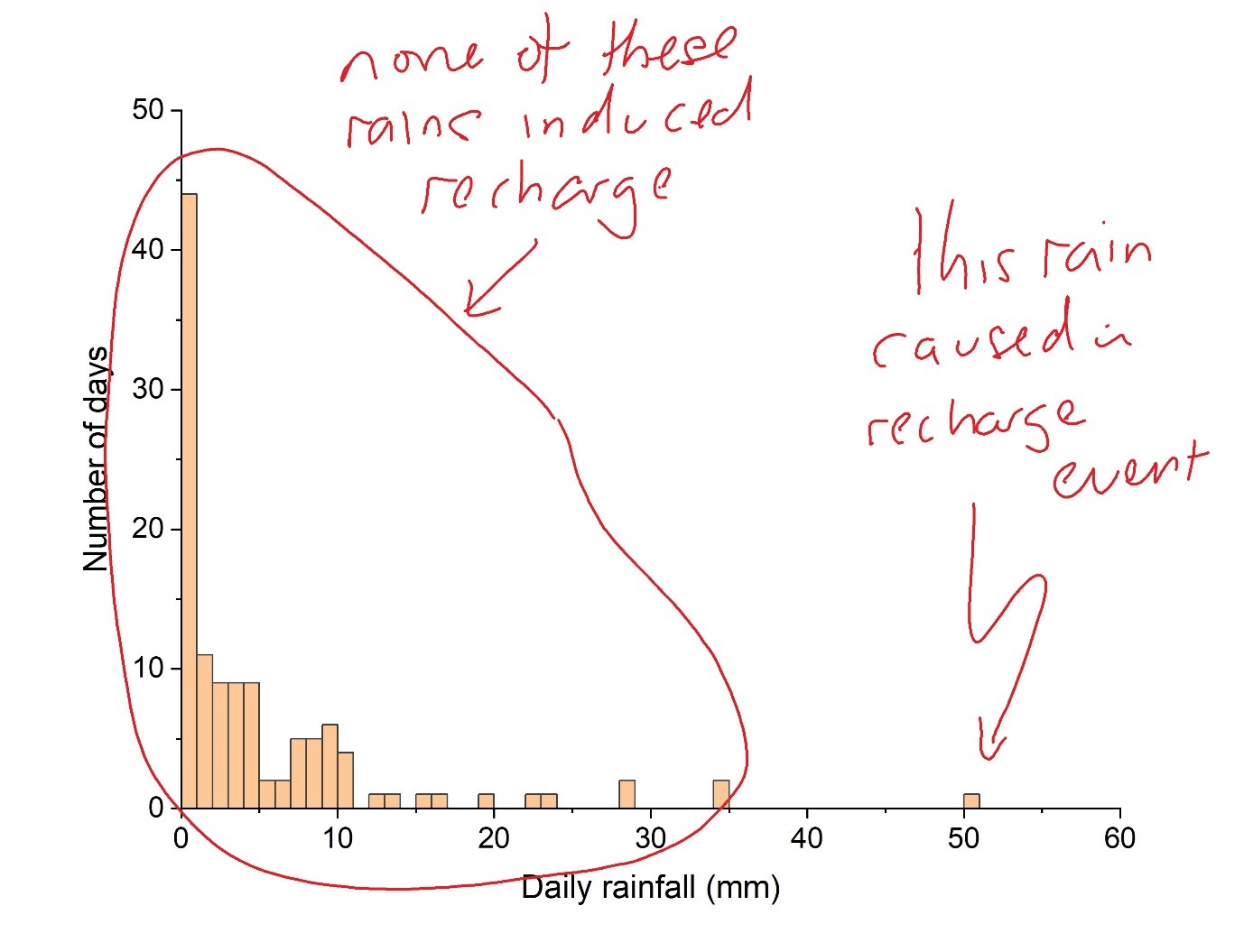
Since the start of 2018, there have been just over 100 days where 10 mm or less of rain has fallen. Some of this rain will have contributed to vegetation growth and the greening of the landscape. But only one day had enough rain to generate rainfall recharge.
What about the soil moisture? The probe network shows that the highest water content of the soil occurred after the October 2018 rainfall event, the same one that led to the only recharge event. However, there are also many other rainfall events that increased the soil water content, but did not lead to recharge. This increased soil water can be utilized by vegetation, leading to a greening of the landscape.
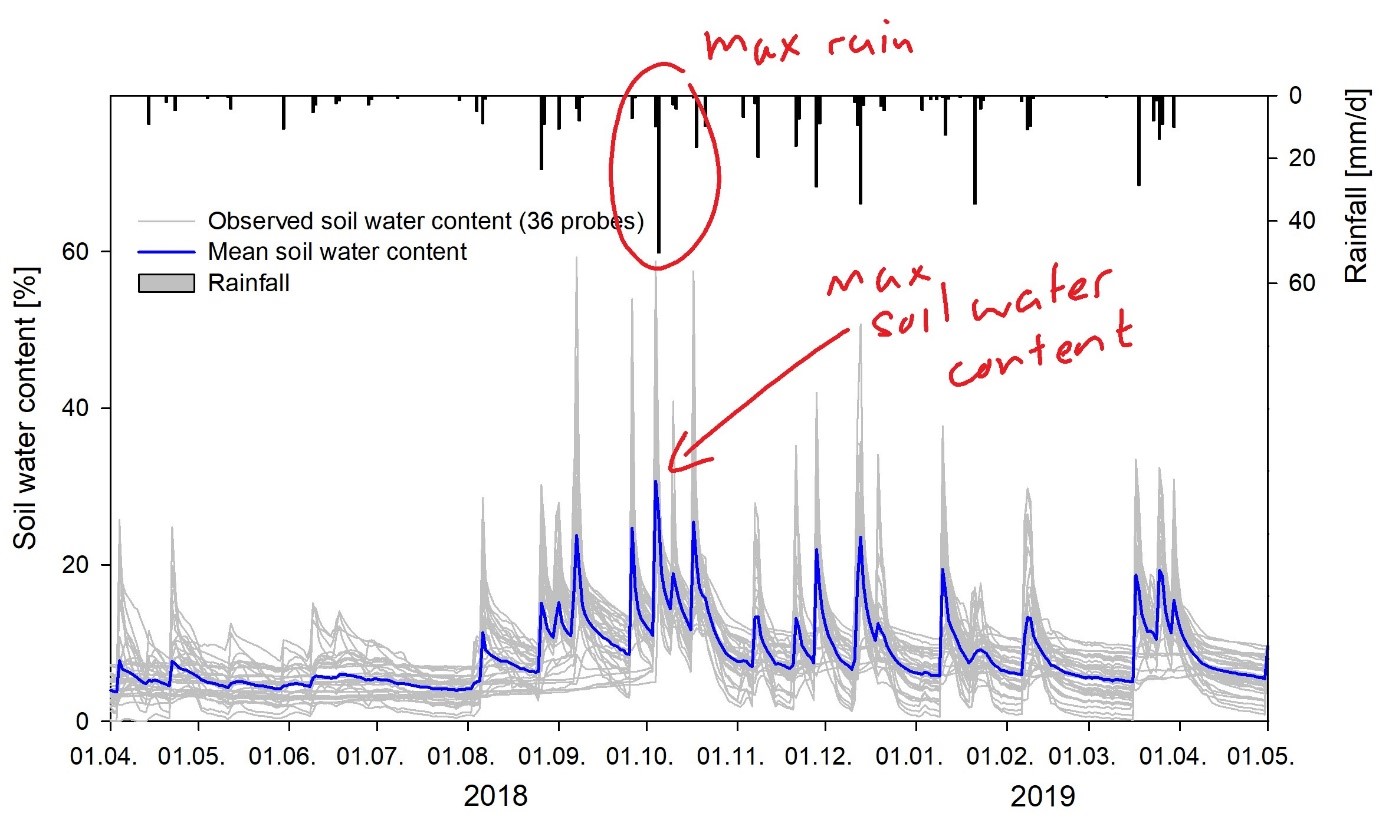
Hence the term ‘green drought’. However, as our monitoring network shows, this green drought is also a groundwater drought. The date when water will run out, or ‘Day 0’, is approaching for some towns. The drilling of new ‘emergency bores’ to tap groundwater are planned to help maintain water supplies in drought affected regions. Let’s hope for groundwater recharging rainfall events soon. Our monitoring at Wellington, NSW, shows how much rain is needed and how rarely such events occur.
|
|
|

 Andy Baker is a Professor in the
Andy Baker is a Professor in the  Andreas Hartmann is an Assistant Professor in
Andreas Hartmann is an Assistant Professor in  Romane Berthelin is a PhD student in the
Romane Berthelin is a PhD student in the 